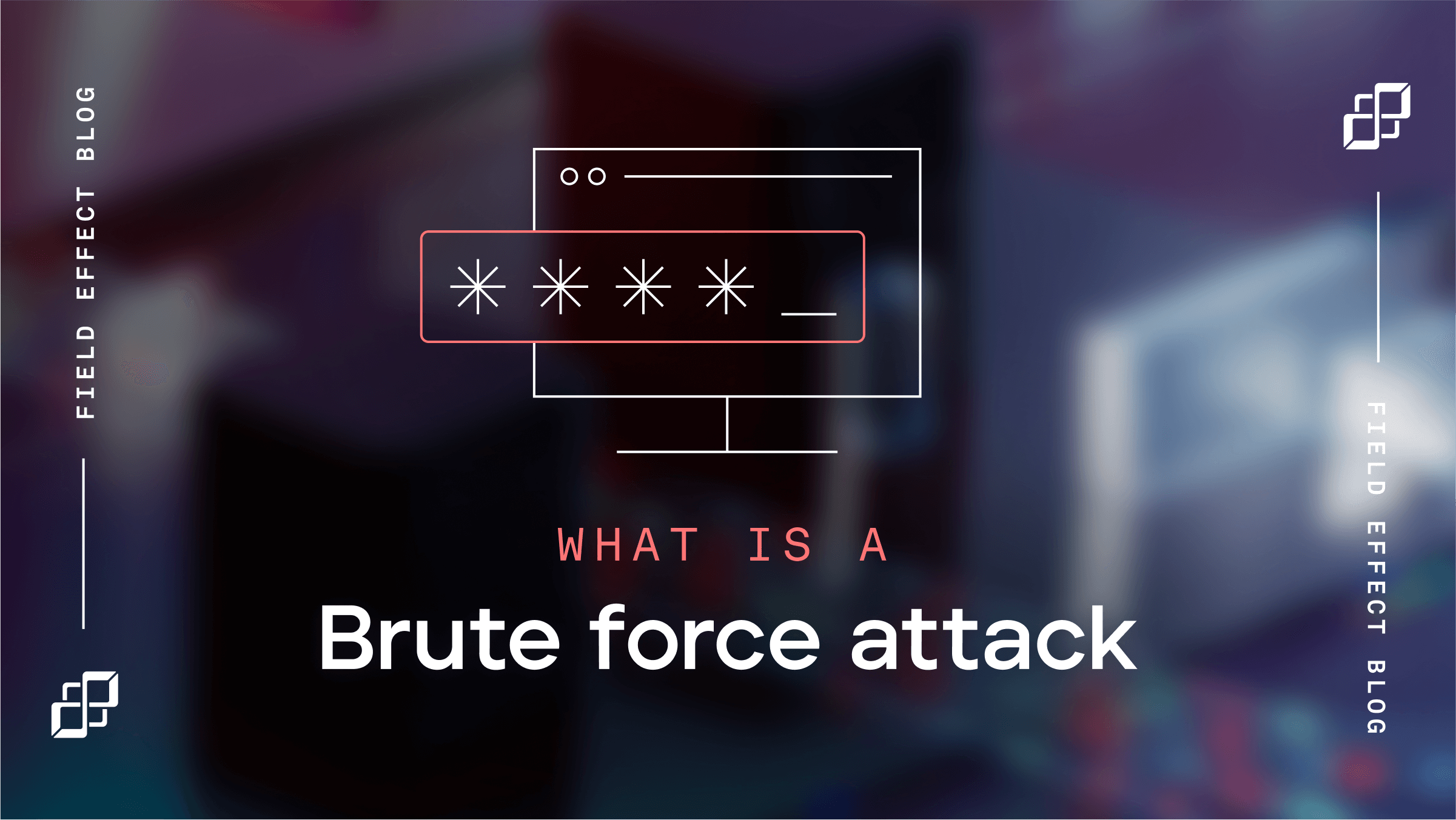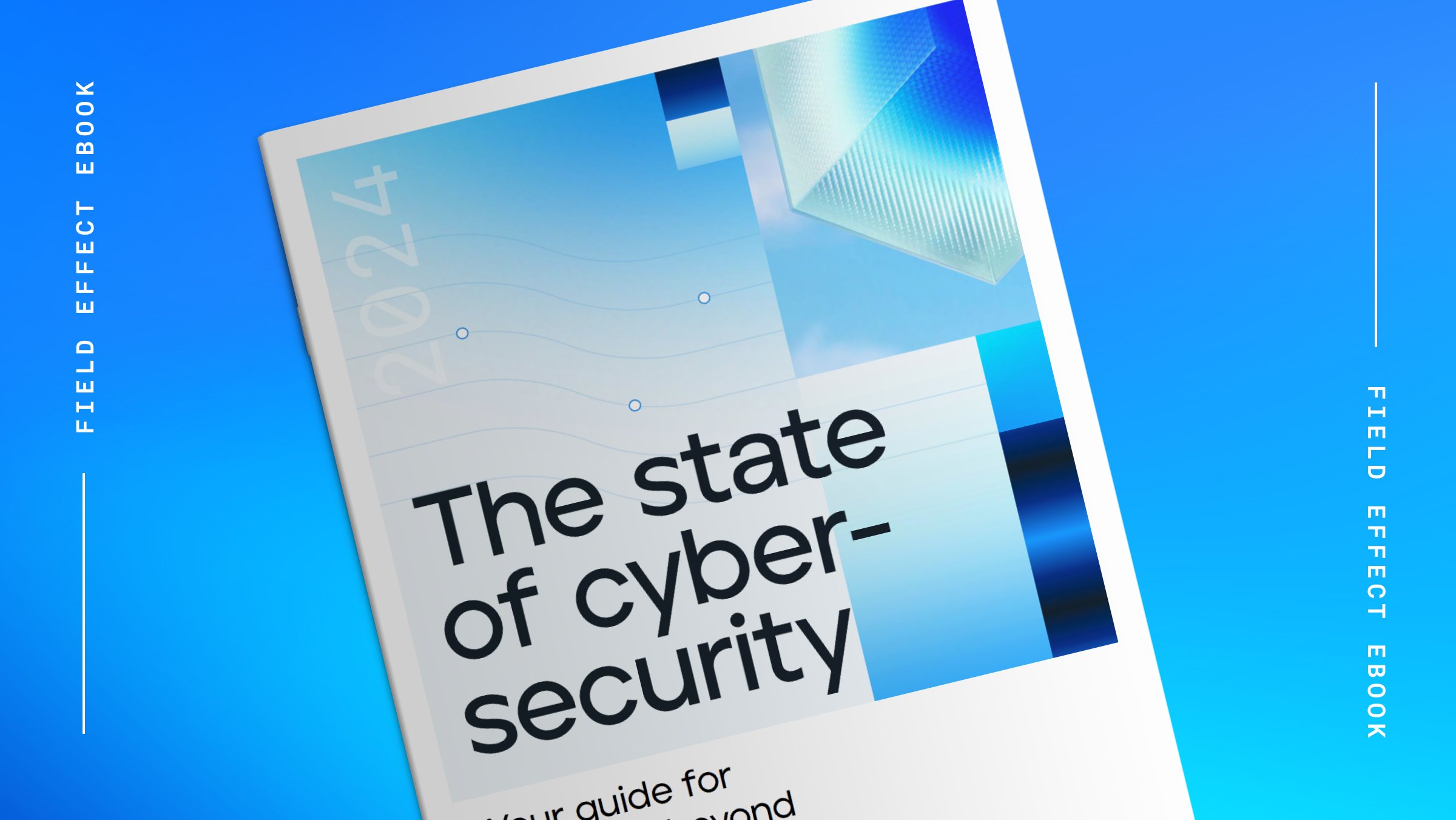
Blog Post
September 29, 2023 | Cybersecurity education
By Field Effect
In today’s ever-advancing technological age, virtually every business—large or small—is conducting at least some portion of its business digitally. Although advanced technology means more efficient business processes, it also comes with risks. Networks, computers, databases, devices, servers, and any other digital component a business utilizes are at risk for cyberattacks.
Cybersecurity is the act of protecting data and devices from unauthorized or criminal use, ensuring confidential information and critical systems are protected. Think about all of the data from our businesses we keep online: financials, confidential communication, medical records, and so much more.
It’s not just large corporations that are at risk for cybersecurity breaches. According to a recent Cost of Cybercrime Study, 43% of cyberattacks are against small businesses, and yet only 14% of those businesses are prepared to handle attacks. Here are some of the most common cyberattacks that businesses are experiencing.
Thankfully, solutions are being created and improved daily to help businesses of all sizes protect their data. In fact, the global cybersecurity market is projected to grow from $172.32 billion in 2023 to $424.97 billion in 2030.
Whether you have two employees or hundreds, zero offices or many, here are eight signs that you should be prioritizing your cybersecurity this year.
Many small businesses are under the impression they don’t collect enough important data to worry about cyberattacks, but the reality is hackers can work with any personal information to get what they want.
At the very least, businesses typically collect and store important personal information about their employees, like social security numbers, addresses, and phone numbers. It’s important to keep this data safe to keep your employees and businesses safe. Often, businesses also collect data about their customers, vendors, or suppliers that needs to be secured too.
We all want our financial information and records safe, but financial data breaches are becoming more and more common. If you’ve ever had a suspicious or fraudulent charge on your credit card, chances are this was the result of some sort of financial data breach.
Download the Cybersecurity 101 eBook to uncover the biggest threats to your business and five best practices to enhance your cybersecurity.
A recent poll by the Deloitte Center for Controllership found that 34.5% of executives said their organizations store accounting and financial data digitally. Of those executives, 22% have experienced at least one "cyber invasion" event while 12.5% have experienced more than one.
With the rise of online retail, hackers have more opportunities than ever to access financial data online. This has given rise to a newer tactic called e-skimming, which is when a hacker implements malicious credential-stealing software on retail websites. As customers are checking out on a site, hackers use this software to steal credit card information.
Each year, more and more countries and industries are developing cybersecurity regulations, and increasingly, new cybersecurity legislation is being proposed to protect the privacy of personal and business information.
As you can see, pieces of legislation are ever-changing and more cybersecurity regulations are expected to come down the pipeline. For businesses in many countries or industries, having the proper cybersecurity processes in place is no longer optional but mandated.
Many companies work with third-party vendors for tasks like accounting, web development and design, marketing, and supply chain management. Oftentimes, businesses grant these third-party vendors access to business networks and data virtually, which introduces a new risk factor for cyberattacks.
If a third-party vendor suffers a malware infection, data breach, or ransomware attack while connected to your cloud or software, it can open the door for hackers to invade your data as well. But that doesn't mean you need to stop working with third parties completely.
To safely introduce a third-party vendor, be sure to:
As of 2023, 12.7% of full-time employees work from home, while 28.2% work a hybrid model. Remote and hybrid work is a game-changer for employees and allows employers to offer competitive benefits in today’s tight labor market.
While taking advantage of the perks of remote work, you want to be sure your company's data is safe as it’s scattered across computers around the country or even the world. Employees who use their own devices in-office or rely on them for remote work may be using an outdated device, for example, that leaves them vulnerable to a cyberattack.
Luckily, protecting your remote assets isn’t as hard as it seems, especially when you follow our definitive checklist for securing remote and hybrid work environments.
Outdated technology, and even outdated devices such as smartphones, laptops, PCs, software, and appliances, are more vulnerable to cyberattacks. Using obsolete products or technology usually means it may no longer receive security updates as developers are focused on creating security updates for current products and software.
If you are running outdated technology, or don’t have a patch management policy in place, you should act now before cybercriminals can exploit your vulnerable systems. Patch management is a process that involves identifying, acquiring, testing and installing code changes intended to fix bugs, fill gaps in security, and add features. Patch management requires staying up-to-date on current available patches and codes, testing them, and making sure they have been properly installed.
Remember, the cost of an attack greatly outweighs the cost of maintaining your technology.
Network visibility is the notion that you're aware of everything connected to and moving through your company's network. Maintaining visibility throughout your network is vital to cybersecurity. Do you know where your data is stored, how it’s transferred, or who has access to what? Have you assessed your threat surface? If you don’t have proper visibility of your network, you won't have the chance to find issues and security gaps before they're exploited. Network visibility is all about being proactive with cybersecurity.
It's no secret humans use more devices today than ever before. According to Forbes Insights, on average, each business executive has 3.36 devices, while CEOs and CFOs often use more than four. Especially in today's remote and hybrid work environment, it can be extremely challenging to keep track of all of the devices that are connected to your network.
With modern technology, you need to keep an eye on devices outside of smartphones and laptops—IoT devices such as connected thermostats, speakers, and appliances don't usually have the same ability to run security tools, but they are still devices connected to your network that need to be monitored and protected.
Download our handpicked collection of cybersecurity resources and start strengthening your company’s cyber defense.
In addition to closely monitoring the devices in your network, visibility is also about monitoring cloud services that store confidential data. Proper network visibility means you’ll have eyes on your network, all cloud-based services, and the accounts that employees use to log into those cloud services. Businesses need visibility of these elements to know if there is suspicious or malicious activity.
Networks are complex and difficult to manage as they are always in flux when employee devices are always connecting, data is constantly evolving, and configurations are always changing. Thankfully, there are cybersecurity solutions available that can give you a clearer view of your network and vulnerabilities, so you can proactively defend against cyber threats.
If you’ve experienced a cyberattack in the past, or think your data security is at risk, that’s the eighth sign you definitely should begin to prioritize cybersecurity today. It can be hard to know for sure if your security is compromised, but here are some key indicators to watch for:
If you find yourself worried that you may have experienced an attack, it is critical that you contact an incident response team immediately to contain the threat and prevent any further damage to your business.
Recent security incidents have proven that it's not really the size or the industry of the company that matters. Cybercriminals are extremely motivated—after all, data is valuable—and always coming up with new strategic ways to gain access to company systems.
The consequences of a cyberattack can be devastating. There are big costs associated with an incident, regardless if the threat actor's goal is to turn your systems offline, compromise confidential data, or damage the company’s reputation.
Many businesses today are underprepared when it comes to detecting and defending against cyber threats, but it's never too late to get started. Download the Cybersecurity Starter Kit—a handpicked collection of our top resources to guide you on your cybersecurity journey.


